WHAT IS HUMAN TRAFFICKING?
According to the United States Department of Justice “Human trafficking, also known as trafficking in persons, is a crime that involves compelling (meaning capable of causing someone to believe or agree) or coercing a person (meaning you make them do it, although they do not want to) to provide labor or services or to engage in commercial sex acts. The coercion can be subtle or overt, physical or psychological. The exploitation of a minor for commercial sex is human trafficking, regardless of whether any form of force, fraud, or coercion was used”.
United States Department of State explains “Traffickers profit at the expense of their victims by compelling them to perform labor or to engage in commercial sex in every region of the United States and around the world. With an estimated 27.6 million victims worldwide at any given time, human traffickers prey on people of all ages, backgrounds, and nationalities, exploiting them for their own profit”.
TYPES OF TRAFFICKING
United States Department of State mentions “The United States recognizes two primary forms of trafficking in persons: forced labor and sex trafficking. Trafficking in persons, human trafficking, and modern slavery are umbrella terms – often used interchangeably – to refer to a crime whereby traffickers exploit and profit at the expense of adults or children by compelling them to perform labor or engage in commercial sex. When a person younger than 18 is used to perform a commercial sex act, it is a crime regardless of whether there is any force, fraud, or coercion involved”.
Infographic on what is Sex Trafficking?: https://sharedhope.org/the-problem/what-is-sex-trafficking/
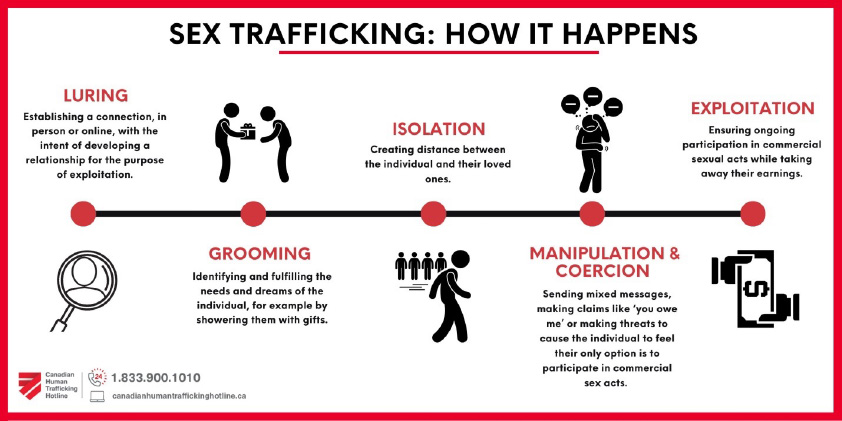
Source: canadiancentretoendhumantrafficking.ca
WHERE ARE THE VICTIMS TARGETED?
According to the website Fight to End Exploitation:
“A good rule of thumb is anywhere there are people, there are traffickers and recruiters. Victims are recruited from everywhere; the most common and fast-growing recruiting grounds are schools. Schools have the largest concentrated population of potential victims and certainly in the age range that most victims enter the life of human trafficking.”
The Fight to End Exploitation website further mentions other places where traffickers seek out Victims:
“Homeless and domestic violence shelters, Group homes and foster care, Neighborhoods, including the victim’s home, Churches/church groups/youth groups, Fast food restaurants, Mall/social hangouts, Social media/online, Parks, Bus stops/transportation, Jail/detention centers, School events/Student functions/College parties”.
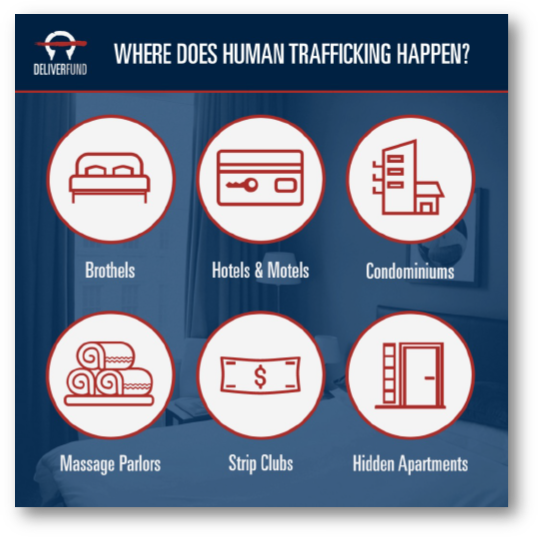
Source: deliverfund.org
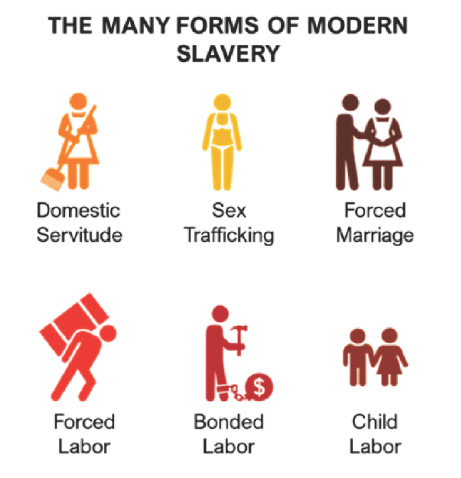
Source: lessonsnblessings.com
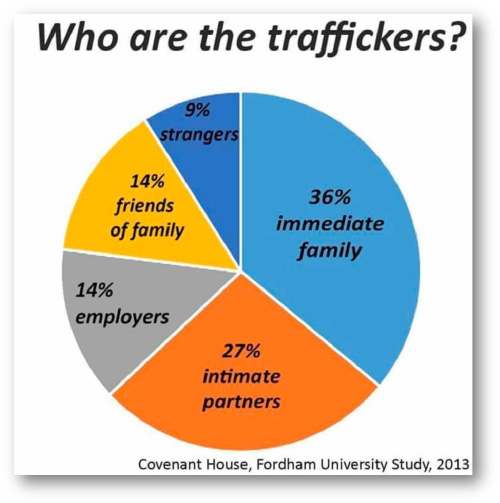
Source: humantraffickinghotline.org
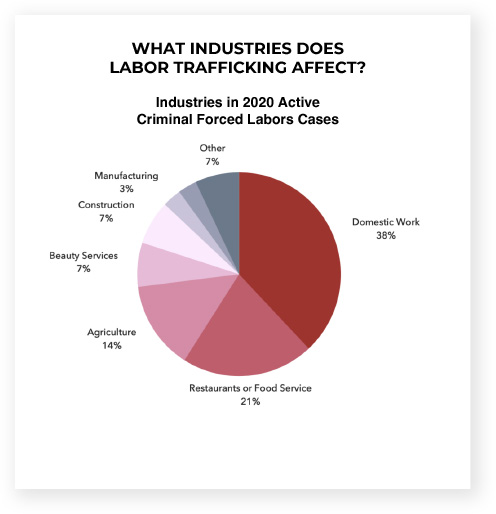
Source: deliverfund.org
KNOW THE FACTS
Human trafficking is a $150 billion global industry, with the United States being one of the top destinations for victims.
The majority of human trafficking victims in the United States are women and girls, and a disproportionate number are people of color.
Human trafficking can happen in any state, city, or town in the United States and it affects individuals from all socioeconomic backgrounds. Florida is ranked number three in all US states. South Florida has a very high number of trafficking cases.
Victims of human trafficking are often forced or coerced into working in various industries, including the sex industry, agriculture, domestic service, construction, and more.
The COVID-19 pandemic has led to an increase in vulnerability for people who are at risk of trafficking, including those who have lost their jobs or are experiencing financial hardship.
The United States government and State governments such as Florida have taken steps to combat human trafficking, including passing laws and providing funding for victim services and law enforcement efforts. However, there is still much work to be done to eradicate this heinous crime.
In 2020, there were 11,500 cases of human trafficking reported to the National Human Trafficking Hotline in the United States. Of these cases, 8,590 were cases of sex trafficking, and 2,357 were cases of labor trafficking.
According to Polaris, a nonprofit non-governmental organization that works to combat and prevent sex and labor trafficking in North America, and operates the U.S. National Human Trafficking Hotline “In 2021, 10,359 situations of human trafficking were reported to the U.S. National Human Trafficking Hotline involving 16,554 individual victims. Shocking as these numbers are, they are likely only a fraction of the actual problem”.
Statistics Links:
Real-life Stories in the news links:
